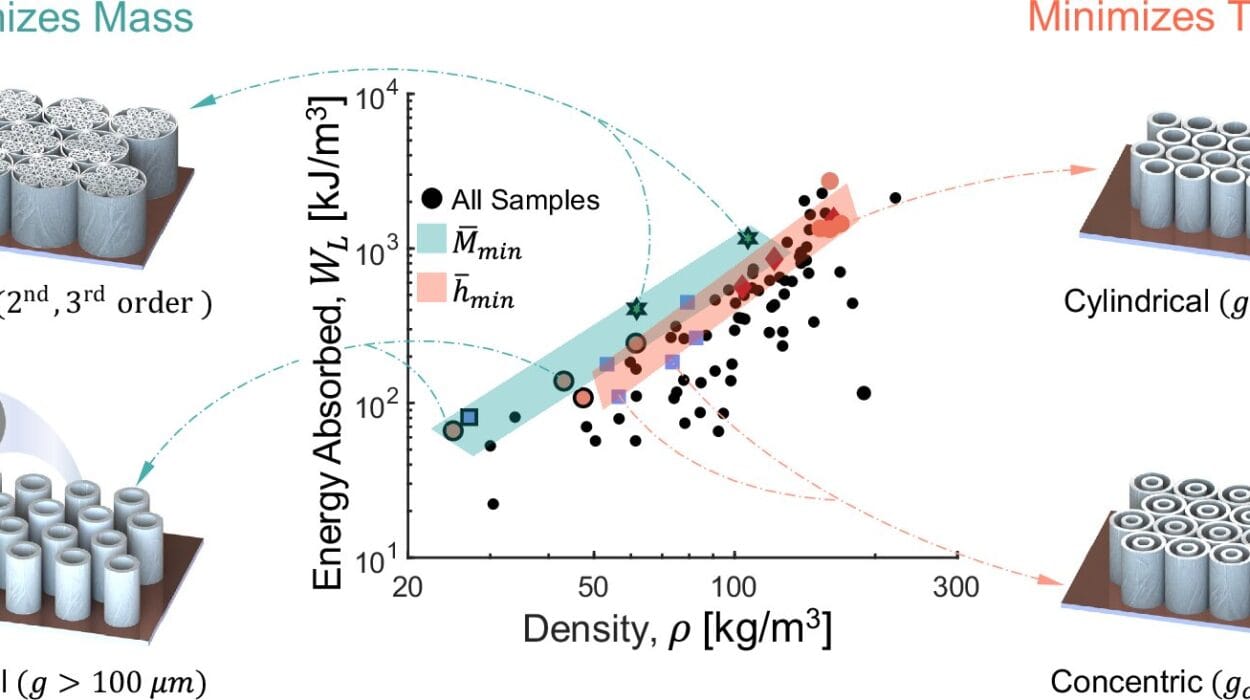In a quiet therapy room in Los Angeles, a woman named Maria clasps a plastic controller between trembling fingers. A chunky headset covers her eyes, and her breathing is rapid, shallow, almost panicked. An image flickers into life before her: the steel hull of an elevator, doors sliding open to reveal the dizzying height of a glass skyscraper. Her palms sweat, her shoulders tense, her voice quivers as she whispers, “I can’t… I can’t do it.”
The therapist’s voice cuts through the digital hum. Calm. Steady. Encouraging. “Maria, you’re safe. Remember—it’s only pixels. It can’t hurt you.”
Maria swallows hard. And then, slowly, one foot in front of the other, she steps into the virtual elevator.
Inside the headset, a synthetic city stretches beneath her, a patchwork quilt of rooftops and traffic. A cool digital breeze seems to brush her cheeks. Her body sways. She grabs a virtual railing. Her terror is real—even though the threat is not.
Ten minutes later, Maria lifts the headset off her face. The world is ordinary again. The office walls are beige. The lights hum gently overhead. She’s breathing more evenly. She smiles. “I never thought I’d be able to do that,” she says. “It felt real. But I know I’m safe.”
And that, in one fragile moment, is the promise of virtual reality therapy. The notion that a digital illusion can reach inside the mind’s deepest fears, rewire its wiring, and offer not merely distraction—but genuine healing.
Pixels and Possibilities
For most of us, virtual reality is a playground. We strap on headsets to battle dragons, explore alien worlds, or wander through digital museums. It’s a realm of games, gadgets, and novelty—a futuristic toy chest.
But for neuroscientists, psychologists, and mental health pioneers, VR is far more than a flashy tech trend. It’s a potential revolution in how we treat anxiety, depression, trauma, chronic pain, phobias, and countless other afflictions of the human brain.
To understand why, we must understand the nature of perception. The brain, after all, is not a passive receiver of reality. It’s a brilliant simulator, constructing the world from fragments of sight, sound, touch, memory, and emotion. Virtual reality exploits that fact. It hijacks the senses so completely that the brain forgets—at least for a while—that the world it sees isn’t real.
For Maria and millions like her, that’s where healing can begin.
The Birth of Virtual Healing
The story of virtual reality therapy begins decades before slick headsets and Silicon Valley hype. It begins in the 1990s, in windowless labs where chunky CRT screens and clunky gloves tried to trick the brain into believing it was somewhere else.
Psychologist Barbara Rothbaum at Emory University was among the pioneers. In 1995, she used early VR rigs to treat acrophobia—the fear of heights. Her patients, strapped into primitive headsets, “stood” on virtual balconies and glass elevators. Despite pixelated graphics and slow processors, their hearts raced, palms sweated, and terror surged. And over time, it worked. Repeated exposure in a safe, controlled setting gradually lessened their fear.
It was a bold fusion of technology and psychology. Instead of relying on imagination alone, therapists could now place patients into a vivid simulation of their fears, controlling every aspect of the experience—lighting, sounds, movement—turning therapy into a digital laboratory.
These early successes sparked new experiments: treating fear of flying, social phobia, PTSD, even spider phobias. The results were modest but promising. Yet VR’s expense and technological limits kept it from widespread use.
Two decades later, with lightweight headsets and dazzling graphics, the dream of virtual healing was reborn.
Stepping Into the Fear
Maria’s journey began with a phone call she could barely make. Her fear of heights had narrowed her world. She avoided bridges. Refused to ride elevators. Couldn’t stay in high-rise hotels or enjoy rooftop views. Her career stalled because her office was on the 20th floor.
Traditional talk therapy hadn’t worked. Simply discussing her fear wasn’t enough. She needed to feel it, confront it, and conquer it. And that’s what virtual reality promised.
Her therapist introduced her to a modern VR system—a sleek headset connected to a powerful computer. With the flick of a digital switch, Maria was standing on the glass balcony of a virtual skyscraper. Her brain screamed that it was real. Her muscles trembled. Her stomach flipped. Yet her rational mind knew she was standing safely in a therapy office.
Each session, she ventured deeper. She learned to control her breathing. To tolerate her pounding heart. To stand closer to the virtual edge. In a few weeks, she was riding real elevators again. By summer, she visited a rooftop bar and marveled at the glittering city lights.
That triumph is more than a personal victory. It’s evidence of how virtual reality reshapes neural pathways, forging new connections between sensation and safety. It’s the brain’s plasticity at work, sculpted by digital tools.
The Science of Presence
Ask any VR researcher to explain why virtual reality works, and they’ll mention a single word: presence. It’s the magical sense that “I am there.” Even though the eyes see pixels, the brain believes the illusion.
Presence is powerful because the human brain doesn’t merely process information—it experiences it. When a virtual spider skitters across a VR floor, a patient with arachnophobia recoils as if it were flesh and blood. The amygdala—the brain’s fear center—doesn’t care whether the threat is real or synthetic. It sounds the alarm all the same.
That’s why VR therapy can be so potent. It’s not just imagination—it’s exposure under controlled conditions. Patients can confront their fears repeatedly, safely, without real-world risks. And therapists can dial up or down the intensity, crafting a tailor-made journey for each patient.
Dr. Stéphane Bouchard, a VR therapy pioneer in Canada, explains it this way: “VR creates a bridge between imagination and reality. It’s immersive enough to trigger emotional responses but safe enough to experiment with new behaviors.”
Healing Invisible Wounds
For many, the wounds are invisible—but no less devastating. Veterans returning from combat zones often carry trauma that haunts them day and night. Loud noises trigger flashbacks. Crowds provoke panic. Sleep becomes a battlefield of nightmares.
Traditional therapy—like Prolonged Exposure—asks patients to verbally recount their trauma over and over, gradually reducing its power. But some find it unbearable. The memories are too raw, too overwhelming to speak aloud.
VR offers a different path.
At the University of Southern California’s Institute for Creative Technologies, psychologist Skip Rizzo developed a program called “Virtual Iraq.” Using realistic 3D environments, veterans revisit the scenes of trauma: desert convoys, crowded marketplaces, distant explosions. Therapists guide them through these digital memories, helping them process fear and guilt in a controlled way.
It’s painful work. But studies show that VR therapy can significantly reduce PTSD symptoms. For some veterans, the headset becomes a portal to healing—a place where they can finally face ghosts that have stalked them for years.
Beyond Trauma
Yet virtual reality therapy doesn’t stop at fear or trauma. Its reach extends into realms once thought inaccessible to technology.
Consider chronic pain. For patients trapped in bodies that ache without end, VR offers temporary relief. Slipping into a serene virtual forest or drifting through an ocean reef distracts the brain from pain signals. It’s not merely escapism—it’s a rewiring of how the nervous system processes discomfort.
In one landmark study, burn victims undergoing painful wound care experienced significantly less pain when immersed in a VR game called “SnowWorld.” As they threw virtual snowballs and glided past icy waterfalls, their brains registered less pain activity on fMRI scans. It was as if the digital landscape numbed the agony.
Researchers are exploring VR for eating disorders, body image disturbances, social anxiety, and even cognitive rehabilitation after strokes. Each use case builds on the same principle: the brain’s willingness to believe in a well-crafted illusion.
Virtual Compassion
One of VR therapy’s most remarkable applications lies in building empathy—a quality sorely needed in an increasingly divided world.
At Stanford’s Virtual Human Interaction Lab, psychologist Jeremy Bailenson has created simulations that let users experience the world through others’ eyes. In one VR scenario, you inhabit the perspective of a homeless person—losing your job, getting evicted, riding a shelter bus. The experience leaves many participants deeply moved, more compassionate, and more willing to help.
Similarly, researchers are exploring VR to reduce racial bias. By letting people “embody” avatars of different races, VR can challenge subconscious stereotypes and foster deeper understanding.
These experiments hint at a radical possibility: that VR could heal not just individuals but society itself, one headset at a time.
The Ethics of Illusion
Yet this brave new world of digital healing raises profound questions. How far should we go in manipulating perception? Is it ethical to expose patients to intense virtual fear? Could VR cause harm, reinforcing trauma rather than healing it?
Some therapists worry that VR might become a quick fix—a high-tech bandage slapped over deeper wounds. Others fear over-reliance on technology, leaving patients disconnected from real human relationships.
Then there’s the question of privacy. VR systems collect vast data: eye movements, heart rate, gestures, vocal patterns. It’s an intimate map of a person’s inner world. Who owns that data? How should it be protected?
These are not idle concerns. As VR therapy expands, regulators and ethicists will grapple with issues of consent, confidentiality, and the potential for misuse.
Yet most therapists remain cautiously optimistic. Used wisely, VR appears to enhance—not replace—traditional therapy. It’s a tool, not a panacea.
Affordability and Access
Despite its promise, VR therapy still faces obstacles. One is cost. While consumer VR headsets are becoming cheaper, clinical-grade systems—complete with custom software and trained therapists—can be expensive.
Insurance coverage varies wildly. In many places, VR therapy remains an out-of-pocket expense, accessible only to those with financial means. Researchers are working to prove its cost-effectiveness, hoping that solid data will persuade insurers to pay for these digital treatments.
There’s also the challenge of technological literacy. Not every patient is comfortable strapping on a headset or navigating virtual menus. Older adults, in particular, may find VR alien and disorienting.
Yet momentum is building. As devices become lighter, cheaper, and easier to use, VR therapy is inching closer to mainstream mental healthcare.
The Digital Healers
Maria is not alone. Across the globe, patients are stepping into digital worlds to battle their demons. A firefighter conquers his fear of burning buildings by walking through virtual flames. A teenager with social anxiety practices conversations in a simulated classroom. A veteran relives combat—not to suffer anew, but to finally let go.
Therapists, too, are discovering unexpected benefits. VR provides them with precise control over therapeutic environments. They can pause a simulation, rewind it, or fine-tune it to match a patient’s tolerance. That level of customization was unimaginable in traditional therapy.
And patients often find it easier to engage in VR therapy. It feels less judgmental, less clinical. The headset becomes a cocoon where vulnerability feels safer.
Where Digital and Reality Converge
One might wonder: if VR therapy feels real, how does the brain distinguish fantasy from reality?
Interestingly, it doesn’t always have to. Healing can happen in either realm. What matters is the emotional learning that takes place. When Maria steps into a virtual elevator, her brain learns that she can survive the sensation of height without harm. That lesson transfers into real life.
Neuroscience calls this “fear extinction.” The brain learns new associations, rewiring old pathways. The result? Less anxiety. More freedom.
In the end, VR therapy is not about tricking people into believing they’re in another world. It’s about giving them safe places to face what frightens them—and discovering they are stronger than they thought.
A Vision of Tomorrow
Imagine a future clinic where therapy begins with scanning your brain for stress markers. You slip on a headset, and your personalized treatment world appears. If you have chronic pain, you float weightless through galaxies. If you suffer social anxiety, you rehearse a job interview with realistic avatars. If you’re battling trauma, you revisit memories gently, with a therapist guiding every pixel.
That future is not far off.
Already, researchers are developing VR systems that adapt in real time to biometric data. If your heart rate spikes, the virtual world softens. If your voice quivers, avatars adjust their tone. Therapy becomes responsive, tailored second by second.
In this brave new frontier, the walls of the clinic dissolve. Treatment can happen at home, in a hotel room, even on an airplane. A therapist can connect remotely, guiding patients through virtual scenarios from thousands of miles away.
It’s a vision full of promise—and caution. Technology alone cannot heal the human spirit. Compassion, empathy, and human connection remain at the heart of true therapy. VR is a powerful tool—but it is not a substitute for the healing presence of another human being.
The Digital Threshold
Maria’s journey is not finished. Her fear of heights may always flicker in the shadows of her mind. But she has learned that she can stand on the edge—and breathe. She has discovered courage in a world of code and pixels.
As she steps out of the therapy office, the sun feels brighter. The city stretches skyward, rooftops gleaming. Somewhere, a glass elevator slides upward, carrying passengers to dizzying views. And Maria knows that if she chooses, she can ride it too.
Virtual reality therapy is still writing its story. But in the silent spaces between beats of the human heart, in the glow of phosphor screens and silicon circuits, it may be helping us answer one of the oldest human questions:
Can we change the shape of our fears? Can we rebuild our minds? Can we heal?
In the flicker of digital light, the answer glimmers: yes.






